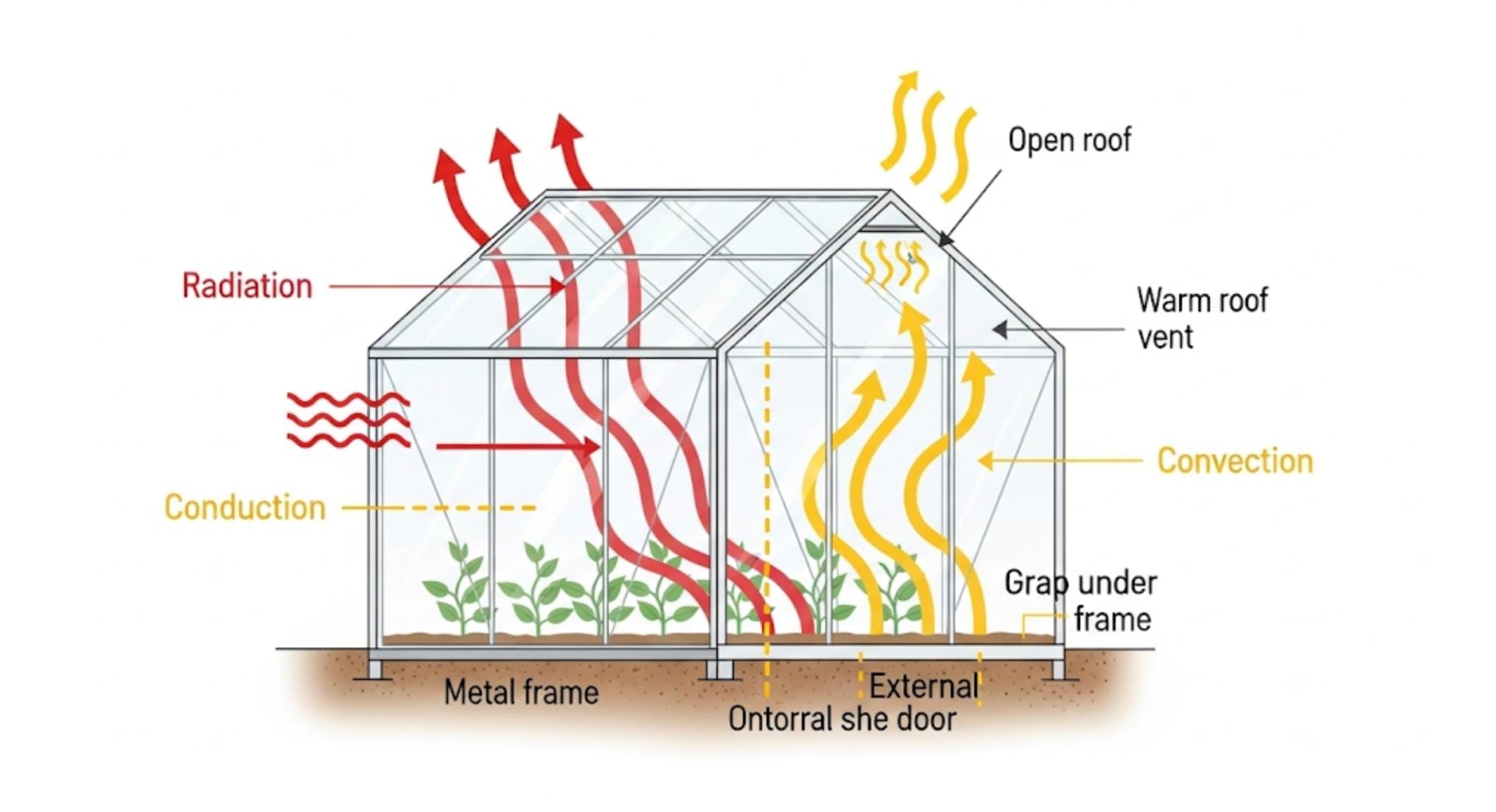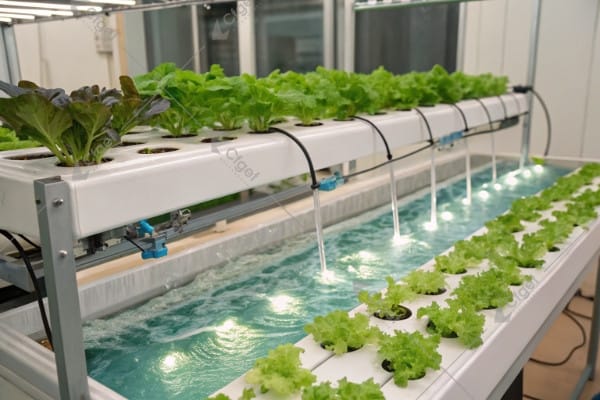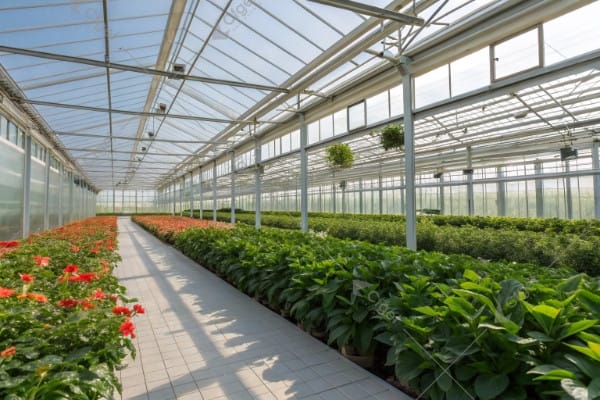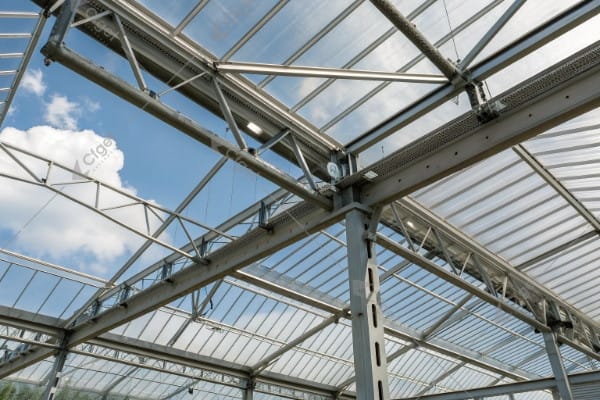Cannabis cultivators face a critical dilemma when scaling operations: indoor facilities demand massive energy inputs and capital, while outdoor grows battle unpredictable weather and security concerns, both compromising consistency and profitability.
Greenhouse cultivation represents the optimal middle ground for commercial cannabis production, combining natural sunlight’s benefits with environmental control capabilities. This hybrid approach significantly reduces energy costs while maintaining quality control and extending growing seasons.
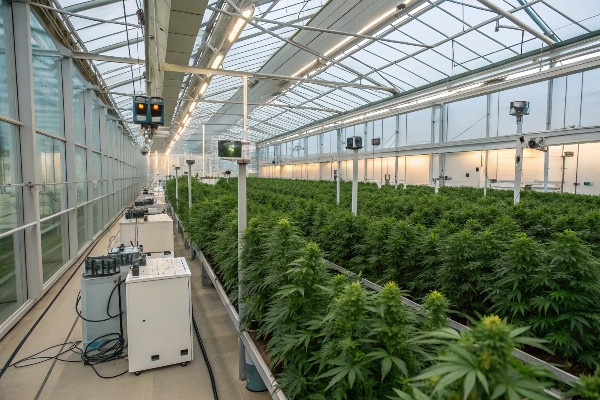
After designing custom greenhouse solutions for 28 years, I’ve witnessed firsthand how controlled environment agriculture transforms commercial cannabis cultivation. The right greenhouse design bridges the gap between energy-intensive indoor operations and unpredictable outdoor grows, creating the perfect environment for consistent, high-quality cannabis production. Let me share what I’ve learned about maximizing cannabis potential through purpose-built greenhouse environments.
Don’t Miss:——Growing Perfect Tomatoes: Why a Greenhouse Makes All the Difference
Why Choose a Greenhouse for Commercial Cannabis Cultivation? Advantages Over Indoor & Outdoor?
Cannabis cultivators struggle choosing between indoor facilities with perfect control but astronomical energy costs versus outdoor farms with natural sunlight but vulnerability to weather, pests, and security breaches.
Greenhouses provide the best of both worlds: natural sunlight supplemented with artificial lighting when needed, environmental control capabilities, extended growing seasons, and significantly reduced energy costs compared to indoor operations.
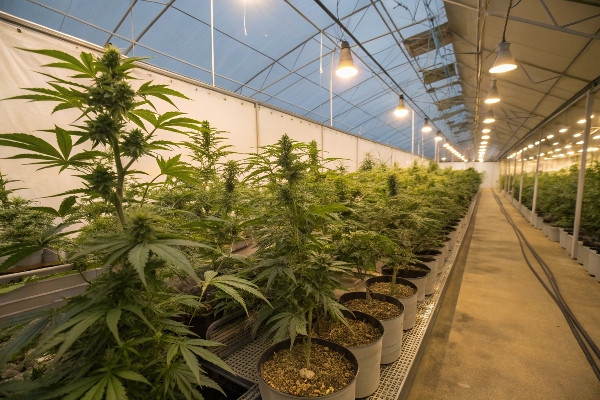
The greenhouse advantage becomes immediately clear when examining the fundamental challenges of cannabis cultivation. Indoor facilities offer unmatched control but at extraordinary cost – electricity often represents 30-50% of operational expenses. Conversely, outdoor operations harness free sunlight but surrender control to nature’s whims, risking crop loss and quality inconsistencies that the premium cannabis market simply won’t tolerate.
Our greenhouse designs capitalize on the middle path, creating hybrid environments that optimize natural resources while maintaining control. The cost savings are substantial – our clients typically report 40-60% lower energy costs compared to equivalent indoor operations. This efficiency comes primarily from harnessing natural sunlight, which not only reduces lighting expenses but also decreases cooling loads since indoor lighting generates significant heat that must be removed.
Beyond energy savings, greenhouses provide superior control compared to outdoor cultivation. Our light-deprivation systems enable precise manipulation of photoperiods, allowing for multiple harvests per year in most climates. This controlled environment also provides a crucial buffer against weather extremes. During a recent project in Southeast Asia, our greenhouse maintained optimal conditions throughout monsoon season while outdoor crops suffered devastating losses.
Pest and pathogen management represents another critical advantage. Unlike open fields, greenhouses create a physical barrier that significantly reduces pest pressure. We integrate screening systems on all ventilation openings that prevent most insect pests from entering while still allowing natural airflow. This approach dramatically decreases pesticide requirements – most of our clients report 50-70% reductions in pesticide applications compared to outdoor operations.
Perhaps most importantly for quality-focused producers, greenhouse environments enable unprecedented consistency. By controlling light cycles, temperature ranges, and humidity levels, cultivators can maintain optimal conditions for terpene and cannabinoid development. This environmental consistency translates directly to product consistency – crucial for medical applications and brand reputation in recreational markets.
You might like:——The Ultimate Guide to Commercial Strawberry Greenhouses: Boost Your Yield & Profits
Critical Design Features Every High-Performance Marijuana Greenhouse Needs?
Many cannabis cultivators invest in generic agricultural greenhouses that fail to address the crop’s unique requirements, resulting in suboptimal environments that compromise quality, yield, and security.
High-performance cannabis greenhouses require specialized design elements including light-deprivation systems, supplemental lighting, advanced climate controls, proper airflow management, and robust security measures tailored to this high-value crop.
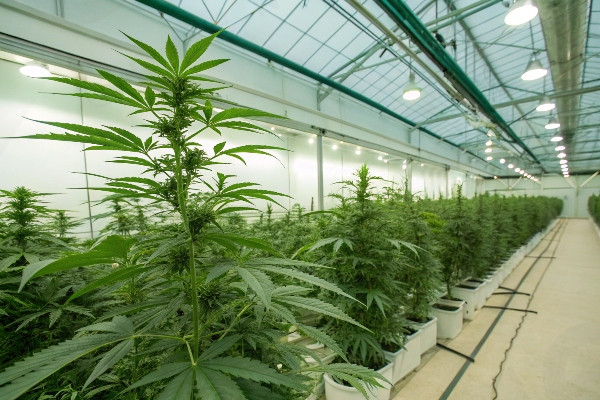
The specialized requirements of cannabis cultivation demand purpose-built greenhouse design rather than adaptation of general horticultural structures. Through our extensive experience with cannabis operations across diverse climates, we’ve identified several critical design elements that determine cultivation success.
Light control systems stand as perhaps the most fundamental requirement. Cannabis flowering depends on precise photoperiods, necessitating complete light deprivation capabilities for certain cultivation schedules. Our blackout systems achieve 100% light exclusion when deployed, preventing light pollution from disrupting flowering cycles. For one large-scale producer in North America, we implemented an automated light-deprivation system with overlapping seals and light traps at all openings, enabling them to produce four complete crop cycles annually – double their previous capacity.
Supplemental lighting represents another critical component. Even in sunny regions, natural light fluctuates with weather and seasons. Our greenhouse designs typically incorporate high-efficiency LED or hybrid lighting systems that complement natural sunlight. These systems maintain optimal Daily Light Integral (DLI) levels year-round, ensuring consistent photosynthesis rates and predictable harvests. For operations in regions with significant seasonal light variation, such as our European clients, these systems prove particularly valuable for maintaining consistent production during winter months.
Airflow engineering critically impacts plant health and development. Cannabis thrives with gentle air movement that strengthens stems, reduces microclimates, and prevents condensation on plant surfaces. Our designs incorporate horizontal airflow fans positioned strategically to create uniform circulation throughout the canopy. This circulation not only strengthens plants but significantly reduces powdery mildew pressure – a common challenge in cannabis cultivation. Advanced configurations include vertical airflow systems that ensure uniform conditions from floor to ceiling.
Water and fertigation systems require particular attention in cannabis greenhouses. We implement precision drip irrigation with dedicated zones allowing tailored water delivery according to plant development stages. Integrated fertigation systems deliver precise nutrient formulations, while automated control systems adjust delivery based on environmental conditions, substrate moisture levels, and crop development stages. This precision not only optimizes plant development but dramatically reduces runoff and environmental impact.
Security integration necessarily influences every design aspect of cannabis greenhouses. Beyond standard perimeter measures, we incorporate structural elements that enhance security without compromising growing conditions. Polycarbonate glazing materials offer impact resistance while specialized locking systems secure access points. Advanced options include integrated camera systems, motion detection, and automated alerts integrated with cultivation management software.
The Importance of Climate Control in Achieving Consistent Cannabis Quality?
Cannabis cultivators struggle with environmental fluctuations that directly impact cannabinoid and terpene profiles, causing inconsistent product quality and preventing standardized production protocols necessary for commercial success.
Precise climate control represents the foundation of consistent cannabis quality. By maintaining optimal temperature, humidity, VPD (Vapor Pressure Deficit), and CO₂ levels throughout the plant lifecycle, growers can develop standardized protocols that reliably produce specific quality attributes.

The relationship between environmental conditions and cannabis quality cannot be overstated. Each environmental parameter directly influences plant metabolism, which determines everything from growth rates to the expression of specific cannabinoids and terpenes. Through years of collaboration with commercial cannabis producers, we’ve developed sophisticated climate control systems that optimize these parameters throughout the cultivation cycle.
Temperature management forms the foundation of cannabis climate control. Different cultivars have specific temperature preferences, but most thrive with daytime temperatures between 75-85°F (24-29°C) and night temperatures between 65-75°F (18-24°C). Our greenhouse HVAC systems maintain these ranges with remarkable precision, typically holding temperatures within ±2°F of setpoints regardless of external conditions. For our clients in extreme climates, like Central Asia where temperature swings can exceed 30°F daily, we implement thermal screens, evaporative cooling, and supplemental heating that maintain perfect conditions throughout seasonal changes.
Humidity control crucially impacts both plant health and final product quality. Cannabis plants prefer relative humidity between 40-70%, with specific ranges optimal for different growth stages. During vegetative growth, higher humidity (60-70%) promotes rapid growth, while flowering stages benefit from lower humidity (40-50%) that encourages resin production. Our integrated dehumidification systems remove excess moisture during critical periods, while fogging systems add humidity during dry conditions. This precise management prevents both powdery mildew (from excessive humidity) and plant stress (from excessively dry conditions).
Vapor Pressure Deficit (VPD) management1 represents a more sophisticated approach to climate control that considers the relationship between temperature and humidity. By maintaining optimal VPD ranges (typically 0.8-1.2 kPa during vegetation and 1.2-1.6 kPa during flowering), our systems create the perfect driving force for transpiration without placing undue stress on plants. This balanced transpiration rate optimizes nutrient uptake and plant metabolism. For clients focused on maximum terpene expression, we’ve implemented dynamic VPD management programs that gradually shift environmental conditions to trigger specific plant responses.
Carbon dioxide enrichment2 provides another powerful tool for quality optimization. Cannabis photosynthesis rates increase with CO₂ levels up to about 1500ppm (compared to ambient 400ppm). Our CO₂ enrichment systems maintain target levels during daylight hours when plants can utilize the additional carbon. This supplementation typically increases productivity by 20-30% while also improving water-use efficiency. For operations in areas with higher energy costs, like our European clients, this efficiency gain significantly improves overall economics.
Boosting ROI: Understanding the Economics of Cannabis Greenhouse Operations?
Cannabis entrepreneurs face daunting capital requirements and operational costs when entering the industry, with many underestimating both the initial investment required and the ongoing operational complexities of different cultivation methods.
Greenhouse cannabis cultivation3 offers superior return on investment through balanced capital expenditure, operational efficiency, and production quality. When properly designed, greenhouse operations significantly reduce energy costs compared to indoor while maintaining higher quality than outdoor production.
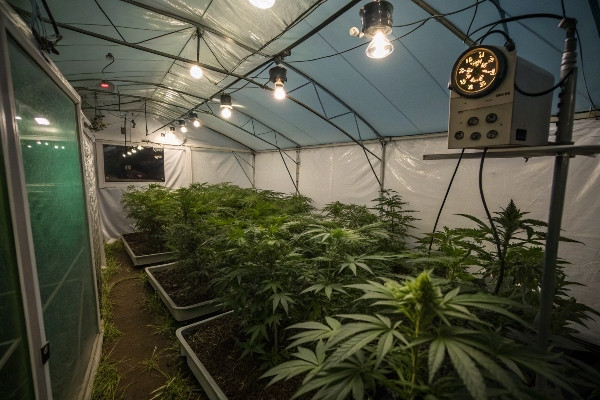
The economic realities of commercial cannabis production demand careful consideration of both capital and operational costs against expected revenues. Through our extensive industry experience developing cultivation facilities across different regions, we’ve gathered valuable data on the comparative economics of different production methods.
Initial capital investment represents the first economic consideration. Indoor facilities typically require $100-300 per square foot in upfront investment, while our purpose-built cannabis greenhouses generally range from $65-150 per square foot depending on automation level and climate control capabilities. This substantial difference in upfront costs dramatically impacts financing requirements and break-even timelines. For a recent 50,000 square foot project in North America, our greenhouse design reduced initial capital requirements by approximately $5 million compared to an equivalent indoor facility while maintaining comparable environmental control capabilities.
Energy consumption forms the most significant operational cost advantage. Indoor facilities typically consume 250-450 kWh per square foot annually, primarily for lighting and HVAC. Our greenhouse designs average 100-200 kWh per square foot depending on location and supplemental lighting requirements. For a 50,000 square foot facility in regions with electricity costs of $0.10/kWh, this difference translates to annual savings of $500,000-$1,750,000. These savings accelerate ROI timelines dramatically – most of our clients achieve complete investment recovery 1-2 years faster than comparable indoor operations.
Production capacity must be evaluated alongside cost considerations. Well-designed cannabis greenhouses typically produce 40-60 grams per square foot per harvest, with 4-6 harvests annually depending on cultivation strategy. This production efficiency rivals indoor facilities while far exceeding typical outdoor yields. The consistency of production also provides crucial advantages for supply chain management and sales contracts. One client in a competitive market secured premium wholesale agreements specifically because they could guarantee consistent supply volumes and quality specifications year-round – something their outdoor competitors couldn’t match.
Labor efficiency significantly impacts overall economics. Our greenhouse designs incorporate workflow optimization principles that reduce labor requirements by 15-25% compared to equivalent indoor operations. Automated environmental controls, centralized irrigation/fertigation systems, and optimized work patterns all contribute to this efficiency. For operations in regions with higher labor costs, like our European clients, these efficiencies often represent the difference between profitability and operational losses.
Regulatory compliance costs also favor greenhouse operations in many jurisdictions. Energy efficiency incentives, reduced carbon footprints, and lower water usage often qualify greenhouse operations for preferential treatment or rebates. Several clients have secured substantial utility incentives for implementing energy-efficient greenhouse designs, further improving their economic position. As regulatory frameworks increasingly emphasize environmental impact, these advantages will likely grow more significant.
Conclusion
A well-designed cannabis greenhouse represents the optimal balance of environmental control, energy efficiency, and production quality, offering commercial cultivators the most sustainable path to consistent, high-quality production and superior long-term profitability.
Understanding VPD management can enhance your cannabis cultivation techniques, leading to better plant health and yield. ↩
Exploring CO₂ enrichment can reveal methods to boost cannabis productivity and improve overall quality. ↩
Discover the advantages of greenhouse cultivation for cannabis, including cost savings and improved quality. ↩

